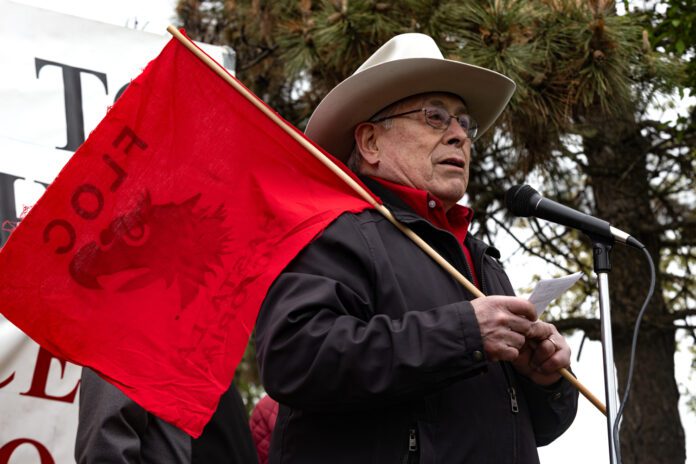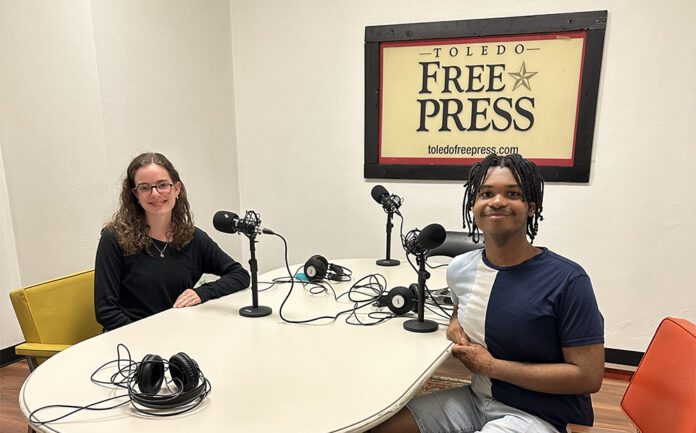Warbler big attraction during Biggest Week in American Birding

NORTHWEST OHIO – Friday, May 9, began the Biggest Week in American Birding, sponsored by the Black Swamp Bird Observatory.
We are the “Warbler capital of the world” right now as thousands of many species of warblers make their way through our region. The epicenter of the local experience is Magee Marsh Wildlife Area and nearby marshes, including Howard Marsh Metropark and Ottawa National Wildlife Refuge.
As expert birders will tell you, the claim to be the best place to see warblers right now is not an exaggeration. It’s not just that they come through in huge numbers, it’s that their favorite place to stop, rest and refuel before their non-stop flight over Lake Erie is a small area with excellent access for birders. The Magee Marsh Bird Trail is the place to be if you want to see warblers.
The featured photo is of a hooded warbler, one of dozens of colorful warblers and other songbird species that will be coming through in the coming weeks. This particular warbler is, in my opinion, one of the best in terms of unusual and striking plumage and a very descriptive name.
The very best weeks to enjoy the spring songbird migration are upon us, and it’s a very special show with the colorful warblers as the stars. One of the favorites among the many species to marvel over is the hooded warbler. Its rich yellow plumage is capped by the unique black markings that give this beautiful bird its name.
One look and you’ll agree that the hooded warbler is one of the most descriptive names of any bird. It’s not only the colorfully unique appearance of this bird that creates the excitement. Even though it is relatively common through much of its range, that’s not the case at Magee where migrating hooded warblers are considered uncommon to rare. It happens to be a species that birders intent on seeing it will be more likely find it in the Oak Openings Region.
The truth is, we’re blessed with birding riches. Any natural area, backyard or neighborhood woodlot has the promise of hosting great birds right now. The best most accessible concentration will be at Magee, but the Metroparks Toledo, Toledo City parks, like Ottawa Park and Riverside, the Maumee River Valley, are all great possibilities.
But there are dozens of warbler species that will be here, some of them passing through and others that will stay and nest. Some are common here in migration, others are more elusive.
SAME Café closing leaves customers ‘nonplussed’
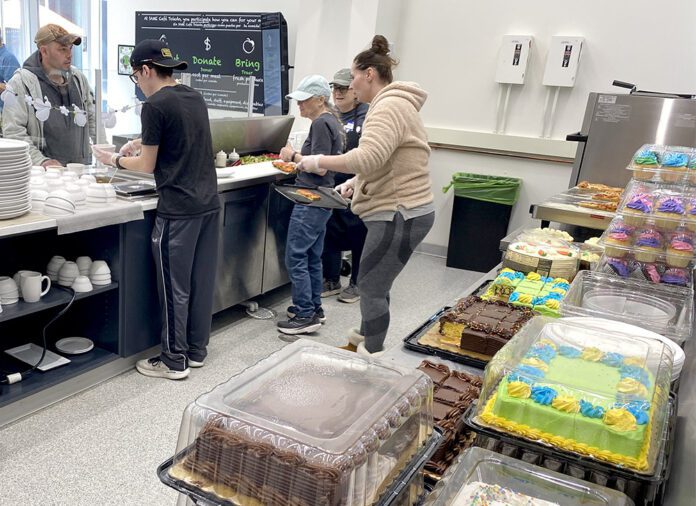
TOLEDO – With the closing of a donation based, nonprofit restaurant in Downtown Toledo, it won’t be the SAME for those who face food insecurities.
The SAME Café – an acronym for So All May Eat – closed its doors in Toledo’s Main Library on April 23 after providing meals for 2½ years on a participation model, where people either donated money or volunteered their time to receive a healthy meal.
“This café has had a big impact. I have seen some life-changing impacts on a lot of people,” said Claudia Annoni, executive director, on the café’s closing day. “It’s been participation-based. People have come together for meals. They are not eating for free; they are helping out by wiping the tables, serving the food. It’s a welcoming place. It’s someplace safe.”
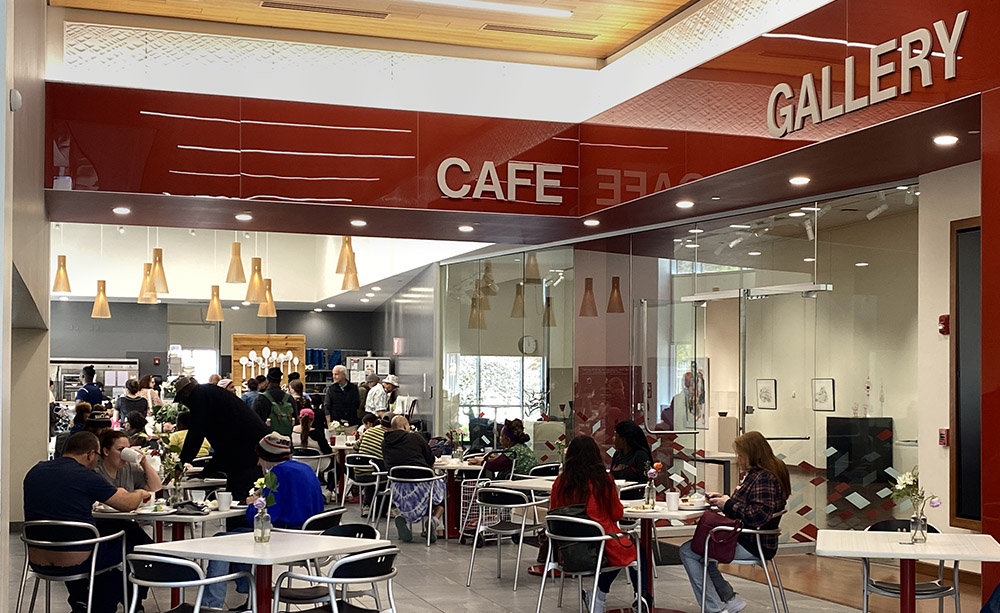
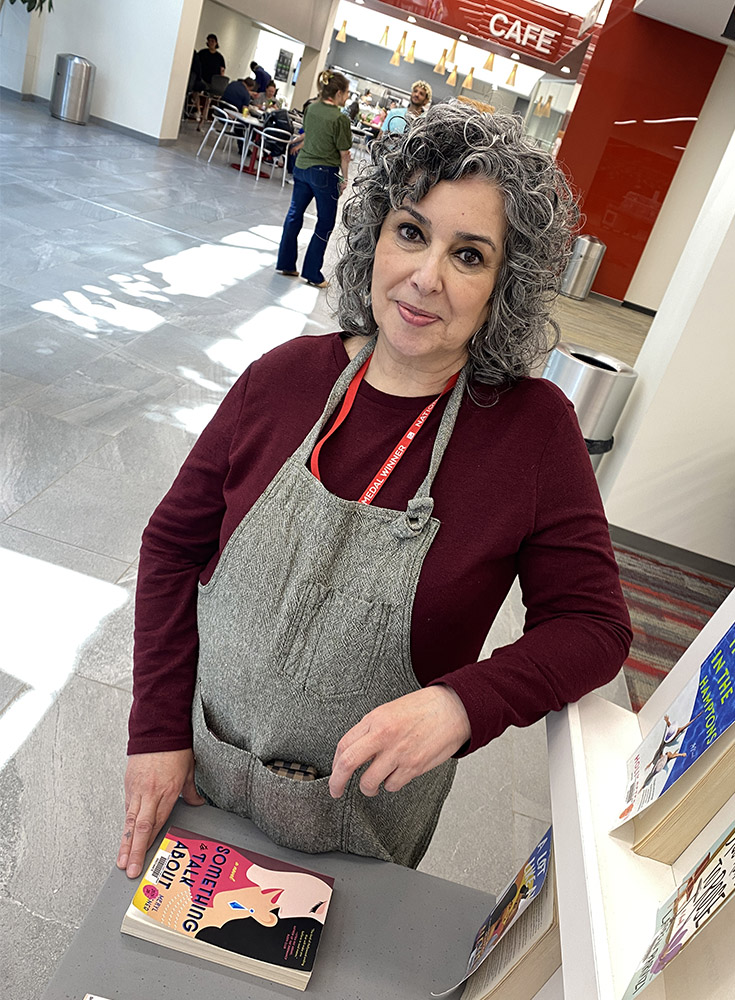
Toledo’s SAME Café opened on Nov. 4, 2022, and typically served about 80 meals at lunchtime from Monday through Friday.
“During the summer, with families and children, we were seeing 160 or 165 people of all ages, all backgrounds,” Annoni said. Of the 80 people eating at the café on a typical day, about 20 paid for their meals, she said.
The café operated on an annual budget of $450,000, and the financial challenges led the board of directors to decide to close the Toledo location. It was one of only two SAME Cafés in the nation. The original SAME Café was founded in Denver in 2006 and continues to operate.
For the cafe’s last day, patrons lined up single file, about 30 people deep, for the cafe’s final meal. One of those patrons was Kelly Cunningham, 49.
“I’ve been coming to the café a lot for several years. When nobody has no money, they can eat here. It helps people,” she said, adding that when she didn’t have money for a meal, she would volunteer by sweeping, mopping or wiping down tables.
Her favorite meal? “Pizza!” she said with enthusiasm. “Pepperoni pizza and cheese pizza!”
Cunningham said she has an apartment near the Toledo Museum of Art and “I probably won’t come down here no more” to the downtown library.
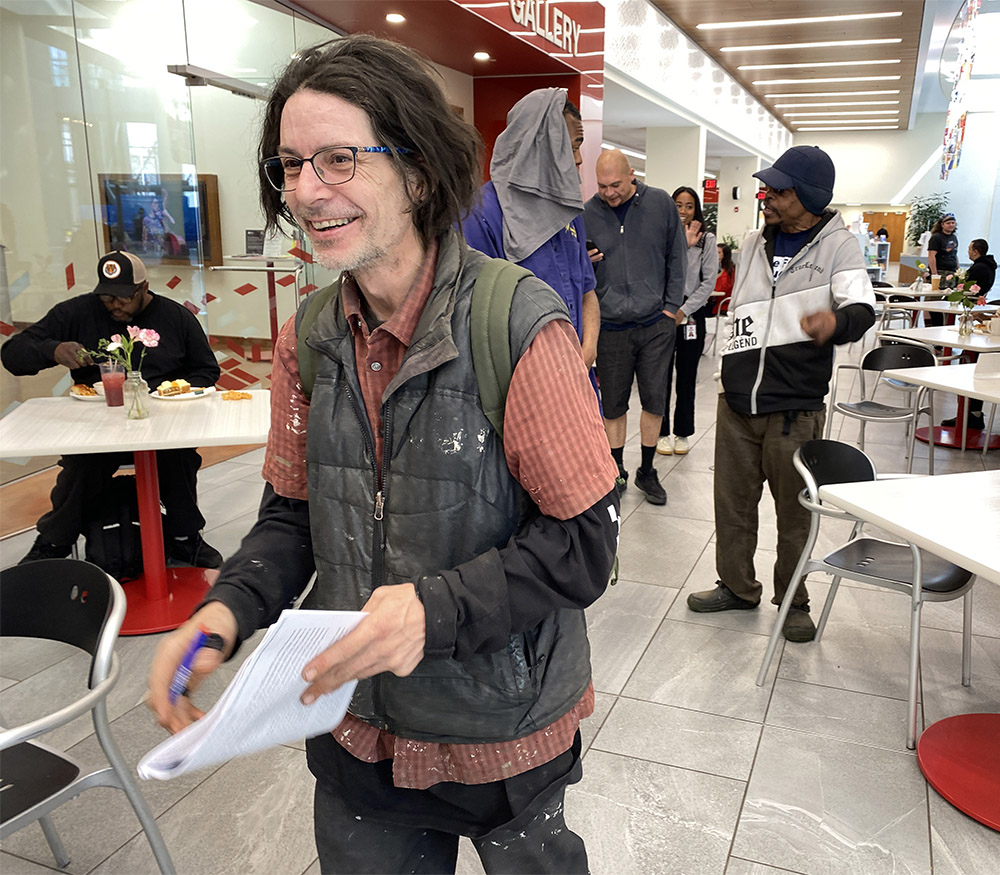
Nathan Keller, 50, said he ate at the café “whenever I [could]. I tell everybody to come down here.”
Holding a stack of printouts as he waited in line, Keller said he was reading his daily Substack content.
“I’m astonished that the café is closing,” Keller said. “In fact, I’m nonplussed.”
One person sitting at a table on the café’s last day said he was not sorry to see it close.
“It’s a self-inflicted closing,” claimed Tyler Hartman, 31, who brought his own carryout meal to the SAME Café. “The food is gross. Only people who have no money came here. People who had money, they weren’t coming here. It sounds brutal, but it’s true. If they could afford Subway or something, they wouldn’t come here.”
Hartman was the only naysayer among those interviewed at the café. All the others said they were grateful for the meals and sorry to see the venue close.
“I come here a couple times a week,” said Kelly Osman. “I really love coming here. I love the way everybody here treats everybody. I feel really blessed.”
She described the food as “a number one. I love the food here, especially the cake.”
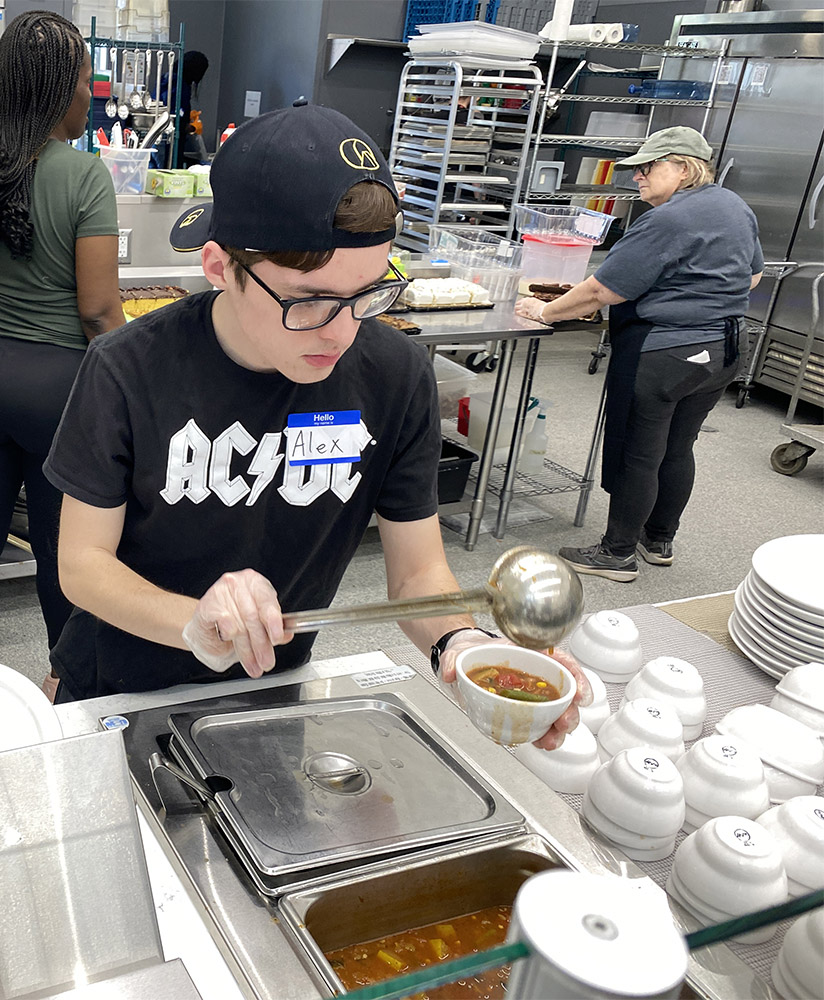
Alex Martinez, 18, a senior at St. John’s Jesuit High School, was serving soup from behind the counter at the café’s last lunch as part of his senior project.
“I wish I could have volunteered here more,” he said. “When I could, I worked double shifts. But I’m glad we are serving meals today. It’s one last hurrah.”
James Caldwell, president and CEO of the Toledo Northwestern Ohio Food Bank, said it was “unfortunate” but not surprising that Toledo’s SAME Café had to close.
“We are living in tough economic times, especially since the beginning of the year,” Caldwell said. “There’s a lot of uncertainty as far as the business environment going forward, the social services climate, the abundance of cuts that appear on the horizon.
“So, while I’m disappointed that a sustenance provider of meals is closing, unfortunately that’s the reality of the times.”
According to the U.S. Department of Agriculture, more than 47 million Americans, including 7.2 million children, lived in food-insecure households in 2023, the latest year that statistics were available.
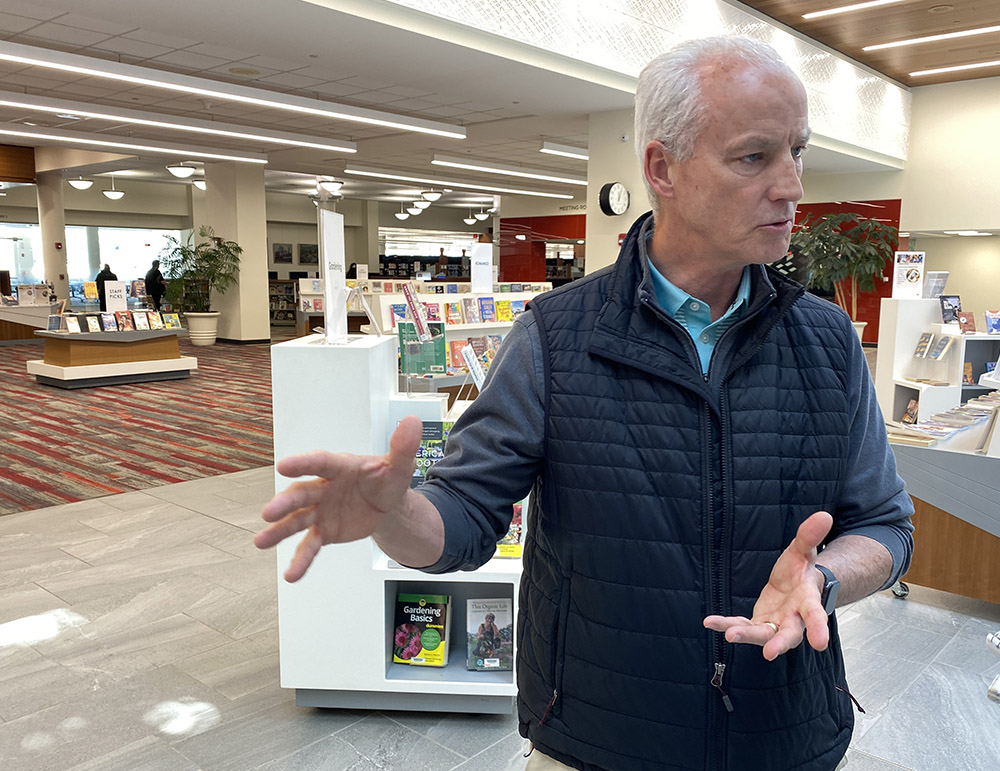
Dennis Fernandez of Toledo, a member of SAME Café’s national board, said the local café served 25,000 to 28,000 meals in 2024.
He said the idea for opening a Toledo location was inspired by a group of local businessmen who visited the Denver café during a conference in Colorado.
“They saw it and said ‘we’ve got to get this in Toledo.’ It took about six years from start to finish to get it open here.”
Fernandez said the financial situation led the board to make the difficult decision to close its Toledo location.
“We need corporate sponsors, more local buy-in to be sustainable,” he said. “There are talks about bringing it back, but not under the SAME umbrella. It might not happen right away, but hopefully we can bring something back here.”
The SAME Café always strived to serve healthful meals, he said, but on the final day the menu included treats such as pizza, cookies and cake.
“We thought we’d go out with a bang,” Fernandez said.
FLOC gathers to address ICE, labor reform
TOLEDO – Flags bearing the outline of an eagle’s head on a red background waved across Broadway St. was paired with chants to free Kilmar Abrego Garcia during the March & Rally for Immigration Reform, put on by the Farm Labor Organizing Committee (FLOC).
Prompted by President Donald Trump’s aggressive approach to immigration, FLOC’s march on May Day, May 3, ended at Golden Rule Park in South Toledo, where a semicircle formed around a trailer hitched to a Ford F-150. Then the rally began.
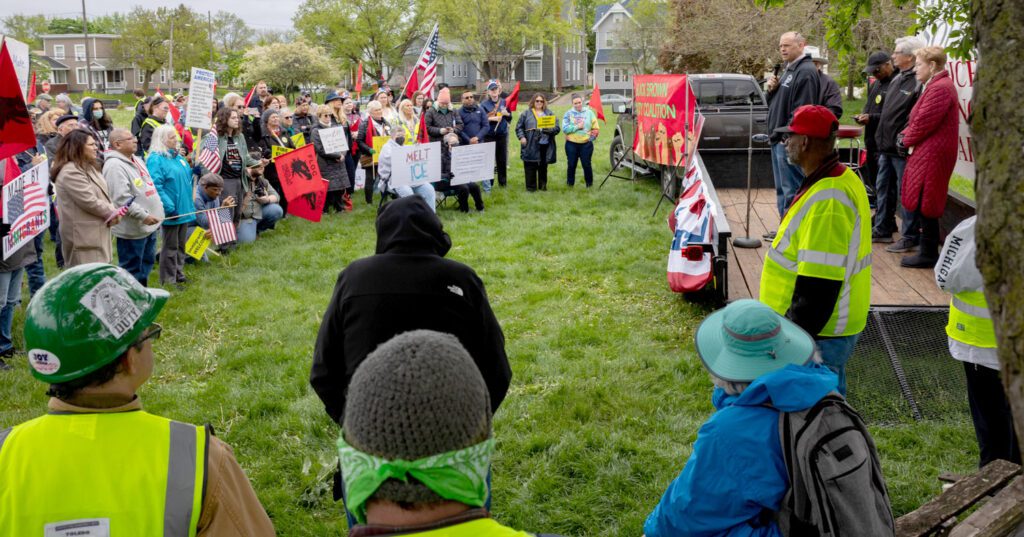
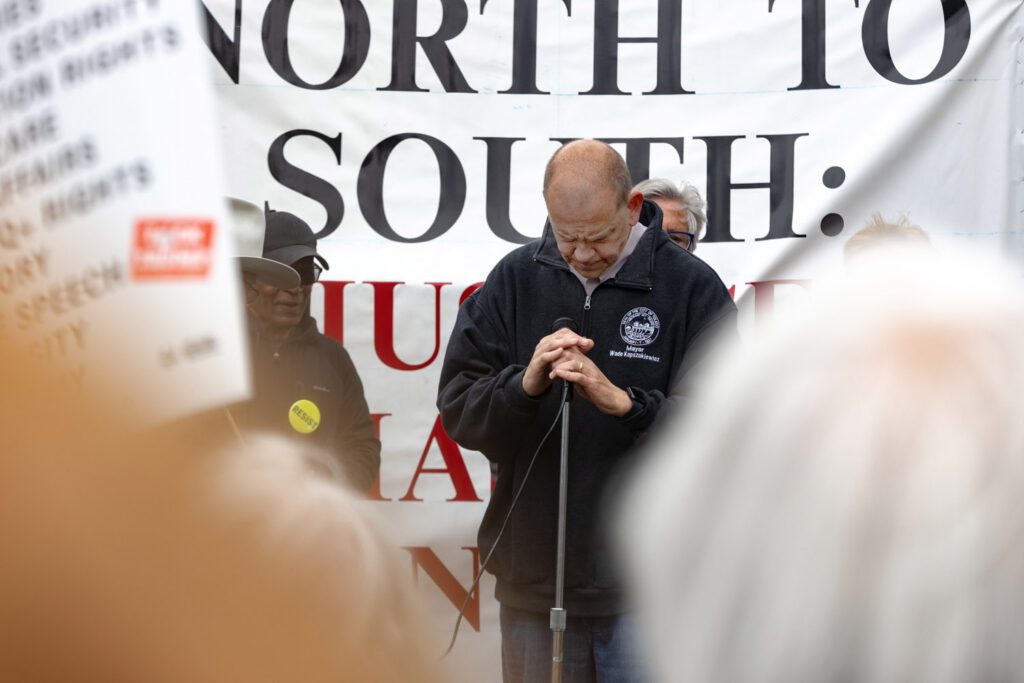
Garcia, an El Salvadoran living in the United States since 2012, has become a symbolic case for immigration in the United States.
More specifically, Garcia’s deportation without due process to Centro de Confinamiento del Terrorismo, or CECOT, a massive prison in El Salvador, has sparked national outrage. According to the 5th (federal level) and 14th (state level) Amendments, every person living in the United States, including undocumented immigrants, has a right to procedural due process.
The U.S. Supreme Court has ordered Trump to “facilitate” Garcia’s return, but without visible progress towards the court’s order, the future of immigration appears tenuous.
Short term resolutions
“This is not a new problem for us,” said Baldemar Velasquez, president of the FLOC, before the rally. It’s more prevalent now, because of Trump, but we’ve lived with this immigration threat our whole history.”
Ancillary speakers, like Lucas county commissioner Pete Gerken, spoke before Velasquez about short-term goals, and referred to Immigration and Customs Enforcement (ICE) officers as modern-day Gestapo agents.
“The hottest place in hell is for those, who in a great time of crisis, maintain their neutrality,” Gerken proclaimed, and launched into some practicalities.
“There will be no federal arrests on our grounds or in our buildings!” Gerken assured attendees, and promised he would pass a resolution saying as much. Next, Gerken offered to ascertain the specific charges associated with those “picked up” by ICE and moved to the Corrections Center of Northwest Ohio (CCNO) in Stryker, Ohio, so all the detainees might have due process.
Toledo Mayor Wade Kapszukiewicz spoke to the need for solidarity with migrants who had not been given due process by reciting Martin Niemöller’s poem about the Holocaust “First they came for…”

During the vote to allow ICE detainees at Stryker, Lucas County Sheriff Mike Navarre said of ICE’s actions, “We’re destroying families by deporting parents of children who are here legally. The federal government created this problem, and they have not offered a solution yet, and that’s what I’m waiting for.”
Long-term sustainability
Speaking to the crowd of about 450 people, Velasquez sought to bypass reactive approaches and pointed out the root of America’s immigration problems.
“The issue we need to address here is the issue of labor rights,” he said. “Nobody’s asking why these people are here in the first place.
“They’re fleeing this and fleeing that, but what’s that connected to? That’s connected to our foreign policy and our trade agreements. Workers have to be put in a position where they can negotiate their treatment, their wages and where they’re working to avoid exploitation.”
FLOC handed out flyers with four main points calling for:
- Amnesty for immigrant workers
- Sustainable trade agreements, so people could “support their families without needing to leave their country”
- Expanded worker rights for immigrant workers on H-2A and H-2B visas
- An expanded immigration judicial system to meet the needs of processing immigrants
FLOC and agreements
Across states, across employers and borders, the FLOC has helped agricultural workers by providing protections to associate members.

“When we organize a group of workers that don’t have collective bargaining agreements, we allow them to be associate members. They can come from any type of work: agriculture, construction, roofing, restaurants.
“We have a referral system; if they need an attorney for this and that, in particular if somebody got cheated for not getting paid by a restaurant or something like that, we’ll intervene for them, and act as an advocate for them.”
Velasquez explained a large sticking point for farmworkers is that “we’re excluded from the National Labor Relations Act.” As per the National Labor Relations Act of 1935, agricultural workers do not have the same protections as others do, so the FLOC fills in where it can as an organizing committee instead of a full-fledged union.
“We want labor rights for agriculture. We want mechanisms to be able to have freedom of association, the right to form unions,” Velasquez said.
Chained to supply
The FLOC’s first major campaign started in 1978 when Velasquez organized a boycott and strike of Campbell’s Soup Co., and then implemented their plans in 1979.
“We compelled the company to implement a mechanism for collective bargaining within their supply chain,” Velasquez said when asked about how they were able to get better rights for workers in spite of the government not recognizing their right to organize.
“They [Campbell’s Soup Co] designed this production system. They can design it with labor rights, voluntarily and unilaterally.
Why wait for a law to make you do it?”
Eventually the campaign was a victory, but the strike and boycott took eight years, ending in 1986 with a historic three-way labor deal between the FLOC, representing workers, and then growers and farms that supply to Campbell’s, and, finally, Campbell’s Soup Co.
“You got to include the whole supply chain,” Velasquez said.

Negotiations alone took about two years to formalize, but by the end of the finalized agreement, farm workers bypassed the need for the government to step in.
Under the new agreement, workers could negotiate wages, working conditions, established minimum pay, an incentive system, unemployment benefits, social security benefits, and Velasquez said workers were given Blue Cross Blue Shield health insurance.
“They could take their family to the best doctor, best hospital, best clinic, wherever they wanted, instead of standing in line for handouts from the government,” Velasquez said. “They’re making beggars of our people by creating all these social service programs.
“Hey, if we had a fair day’s pay, we’ll pay for our own food, pay for our own stuff.”
Other major campaigns by the FLOC include Mt. Olive Pickle Boycott (1999-2004) and their current campaign against Reynolds American Tobacco, which Velasquez said was waylaid by the 2020 COVID-19 pandemic.
The FLOC has also been successful in making formal agreements with local law enforcement beginning in 2017, when the Black & Brown Unity Coalition (BBUC), the civil rights arm of the FLOC, signed a code of conduct between its members and the Toledo Police Department (TPD).
More recently, in February, the FLOC made a deal with the Lucas County Sheriff’s Office, and signed a code of conduct. These steps are seen as peaceful steps toward police reform across Northwest Ohio.
Punching up
“This is a critical moment for our nation,” said Marcy Kaptur, the longest serving female member of the United States House of Representatives for Ohio’s 9th District, following Velasquez’s words and matching the red flags with a red coat.
“Most of us here, if it were 1789, we would not be citizens of our country,” Kaptur said, likely referencing the Alien Enemies Act of 1798, the law Trump has been using to deport immigrants without due process.
“It took until 1920 for women to be afforded the right to vote…and it took a war in 1865 under President Lincoln to free the slaves. There’s a lot of history here for protecting and fighting for those who work, and work under very terrible, terrible conditions.”

Kaptur started off by saying she opposed the North American Free Trade Agreement (NAFTA) when it was drafted under George H.W. Bush, and then passed under Bill Clinton. “When we voted on NAFTA, we tried to get a ‘no’ vote, and we knew the people who did this have made so much money because they play off penny-wage labor.
“We’re being led by very selfish, highly wealthy people who have no idea about what your family has done in this country and what you have done to survive.”
In the middle of speaking about the conditions of migrant workers in North Carolina, where many associate FLOC members are located, a member of the crowd disrupted Kaptur’s speech, asking why she had voted for the Laken Riley Act, passed in January, which lessens protections for immigrants and also allows states to sue the federal government for not being tough enough on the border.
An uproar from the crowd silenced the disruption, and Kaptur responded, “I can talk about those…” before the dissatisfaction of the crowd drowned out the questioner, and she said, “Must be on the other side.”
Continuing to speak to the bleak conditions she saw in the tobacco fields of North Carolina she resolved, “I am for the reformation of the National Labor Relations Act, to include agricultural labor, continentally,” which would mean Canada and Mexico would be allowed to organize their labor.
The action on Saturday afternoon marked one footnote in the decades-long resolution of the Farmer Labor Organizing Committee’s efforts for equity among agricultural workers.
“I was so proud of Marcy Kaptur, because she went with me to Monterrey [Mexico] and talked to the authorities in Nuevo León for a fair and honest investigation,” Velasquez said, detailing how one of FLOC’s organizers, Santiago Rafael Cruz, had been bound and beaten to death in 2007 inside a FLOC office in Mexico.

Velasquez was appreciative of the congresswoman, and said without her support, the FLOC would not have had a successful investigation of the murder through the Inter-American Commission on Human Rights to give FLOC protective orders.
“We’ve been consistently targeted internally and externally, all over the place,” Velasquez said. “We continue to fight the naysayers and people who don’t get the understanding of the broader framework of how agriculture works and what’s the relationship with everybody.
“Immigrants are in a very vulnerable position, but that’s why we’re asking to reverse the dismantling of the immigration judicial system by expanding and hiring more adjudicators to uphold due process of refugees, societies, parolees and victims of crime.”
The number of FLOC members has dwindled in Ohio over the years, but has grown in North Carolina, where the collective bargaining membership has grown to about 90,000 members.
Velasquez said his next step is to hold similar rallies in other migrant communities where FLOC is more active.
“This is a really hard struggle,” Kaptur added. “And you have to ask yourself, ‘Are you up for it?’”


Miles Across America: Deb Miles Kelly
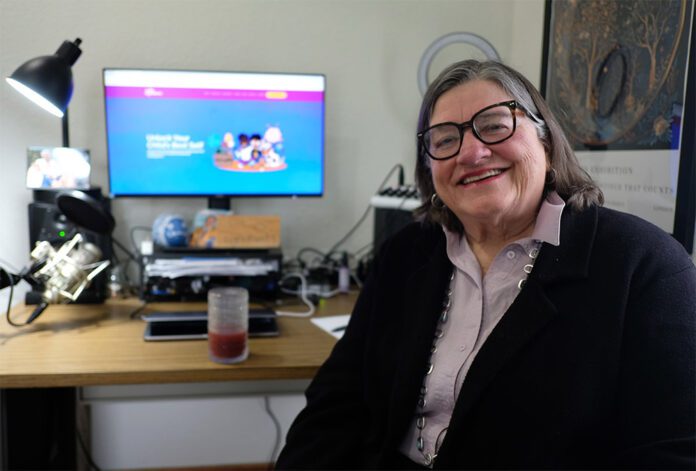
Toledoan launches innovative education curriculum
WHITEHOUSE – In her 74th year, more than two decades after she left Toledo, Deb Miles Kelly is firmly bucking author Tom Wolfe’s adage You Can’t Go Home Again.
But, then, Kelly always has forged an independent, unconventional path.
In 2003, after ending a 30-year marriage that produced four children, she sold all of her possessions and departed the Toledo area. On foot.
In the heat of late summer, she walked to St. Louis, a distance of 469 miles. Along the way, Kelly’s quest and magnetic personality made her many friends. People opened their doors – and hearts – to the middle-aged wanderer.
Now, 22 years later, the most important lesson learned from the experience still resonates.
“Americans are the most kind and generous people,” she says. “I was never alone.”
We’re chatting in Kelly’s immaculate and beautifully designed 660-square-foot home. It sits on one acre across from Oak Openings Metropark. The home and adjacent five acres belong to her daughter and son-in-law, Jill and Jade Lipinski, who operate a landscaping and excavating business on the property.
Kelly, born and schooled in Toledo, lives only three miles from the considerably larger Monclova Township home where she raised her family. It’s been a full-circle journey spanning 21 years.
When Kelly left on her trek, which she dubbed Miles Across America, she intended to reach the Sierra Nevada town of Truckee, Calif., where her two sons lived. But the weather turned cold by the time she reached St. Louis, so Kelly traveled by air the rest of the way.
In Truckee, 12 miles northwest of Lake Tahoe, her life flourished in unforeseen ways.
Her sons, Bill and Kevin, started a house painting business. Their mother signed on as the marketing director. Her daughter, Erin, moved from Ohio to join the business as the color consultant.
Then, at Kelly’s invitation, her ex-husband and still best friend, Bill Kelly, in failing health from the chronic alcoholism that ended their marriage, arrived in 2005. He quit drinking the day he stepped off the plane. An astute businessman from his days running Kelly’s IGA Foodliner in South Toledo, Bill played a pivotal role in organizing the family business. He died five years later, in 2010, but his legacy was secure.
“He told me those were the best years of his life,” Kelly says, still amazed by Bill’s unexpected resurgence and his positive impact on her tight-knit family.
Aside from work, she grew close to her six grandchildren. Kelly attended all their sports and school events. They called her Shanti, which means “peace” in Sanskrit.
Meanwhile, an idea that had been percolating for years began to take shape. As a student of life, as she describes herself, Kelly witnessed the adverse impact of a chaotic, fast-paced world on school children. She tapped information from educators, technologists and marketers and came up with a platform she called Life Ingredients. The initial idea, she said, was to provide teachers – and parents – with a toolkit to instruct students to calm their minds. The hopeful result would be improved critical thinking and learning how to manage their lives.
Life Ingredients kept her busy, so Kelly retired from the family business at 65. She began traveling with her three best friends from Rogers High School and created a podcast called Rams Radio RH, in which she interviewed Rogers’ alums.
By 2023, Kelly, very much possessing an intuitive mindset, felt the tug of the road once again.
“I needed a change,” she says, looking back. “It was the same inspiration I had for Miles Across America.”
Other factors nudged her motivation to move on. Her grandchildren were older, diminishing their Shanti’s role in their lives. And her cozy apartment of 15 years, above her son Kevin’s house, was about to disappear as he was building a new home on the site.
So, on April 1, 2024, Kelly packed her framed art, a cherished soup pot, favorite books and little else into her 12-year-old Honda and headed east. Over the next five months she attended a retreat in Colorado and couch surfed with family and friends in Florida, Vancouver, British Columbia and Tennessee. Along the way, there was an unexplainable pull toward Lucas County.
“I had this feeling I needed to go home,” she says.
She arrived in September and moved into a Maumee apartment. Word spread among her many friends that Deb Kelly, the can-do girl, was back. That led to her recruitment as one of the organizers of a high school reunion. The combination of the lengthy road trip, reunion activities and subsequent holidays proved too much for the normally healthy Kelly.
“I got really sick in January,” she says.
Her undiagnosed illness lingered for weeks until her daughter Jill finally coaxed her into an urgent care visit. There, tests revealed a urinary tract infection. Antibiotics handled the illness but not her stubborn aversion to doctors.
“I believe the body can heal itself,” Kelly explains, reaffirming the unconventional thinking that has defined her life.
She moved into the Whitehouse home in February. That story involved another intuitive episode. Kelly had been looking at tiny house designs on the Internet and thinking such a place would be a perfect fit. A few months after she returned, Jill called and said, “Mom, we bought the property next to us. You can live in the house.”
Aside from a home and area she loves, Kelly has enjoyed growing closer to Jill, her husband and two grandchildren, Paxton, 19, and 14-year-old Piper. She admits to a contentious relationship with her eldest daughter in years past, but that situation has softened considerably.
“I overheard Jill tell her siblings one day, ‘I get Mom now for the rest of my life,'” Kelly says, clearly moved by those words. “I’m so proud of that girl.”
She explains that in addition to working with her husband, Jill will be opening a coffee shop called Wild Roots at Oak Openings this summer. The other Kelly children are crushing it, as well. The house painting shop started by her sons has turned into Kelly Brothers Painting, a multi-million-dollar business with more than 75 contract employees operating in three towns. Meanwhile, all four siblings are involved in a number of real estate ventures in multiple states. Kelly sits in on their monthly meetings, offering the occasional advice.
Over the course of an hour, we quickly bounced from one topic to the next. Her newest friend, a 4-year-old rescue dog named Ivy, became a welcome roommate four days earlier. She’s anxious for warmer weather so she can plant her herb garden. She just completed a 105-page photo book for her granddaughter Kailea’s 21st birthday. She’s promised each of the eight the same: That’s two down and six to go – three of them in 2026.
Whew! I’m exhausted.
Kelly possesses a level of infectious enthusiasm on her many areas of interest that can wear you out if you are unprepared. I asked her if she’s ever able to quiet her active mind. She responds with a single word: meditation.
“I’ve been practicing it most of my life,” she says.
That brought us back to Life Ingredients and her plan to grow the business. Kelly tested an early version of the program in a few Truckee-area schools with excellent results. Since then, she’s collaborated with an illustrator, Kelly Dillon, and produced eight children’s books, more than 150 instruction videos and eight short stories – all fee-based on the Life Ingredients website.
The target audience remains parents and teachers, who also benefit from the meditative aspect of the program. As a tribute to her grandchildren, her pseudonym for materials produced solely for children is Shanti.
Next up is a YouTube channel.
“I intend to do talks, sharing my material,” Kelly says. “That includes everything from stories, to cooking, art projects, planting a garden and meditating in nature.”
Final question: That’s a lot of work. Why?
Of course, Kelly had an answer.
“I have been thinking about what kind of legacy I can leave my grandchildren. I could leave them a few bucks in the bank and some china for their cabinet. But I don’t think it will really rock their world or the world at large. This might.”
Federal nonprofit aid to unhoused threatened

TOLEDO – Recent federal funding and staffing cuts have brought strong reactions nationwide, especially among our most vulnerable populations and those who help them survive.
While some U.S. nonprofits face particular challenges, like those within our national parks, vulnerable groups are influenced most directly. Already at-risk individuals, like those experiencing domestic violence and mental illness, often require assistance to establish themselves in a safe environment. Programs addressing homelessness are now fighting to continue doing this vital work in our community.
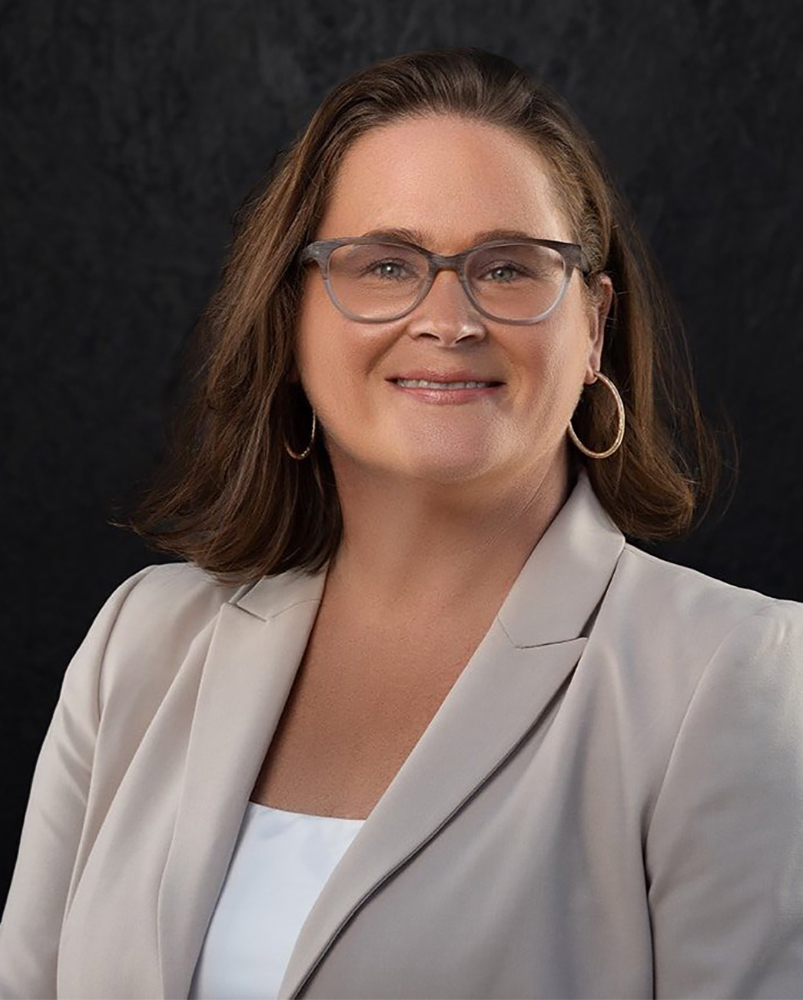

Julie Embree is the executive director of The Toledo Lucas County Homelessness Board, an organization that guides and funds nonprofits addressing homelessness. Embree’s organization works hard to collect data supporting the need to address homelessness in the Toledo area. This is crucial because funding for the area directly comes from that data.
Amid the funding changes, TLCHB struggles to plan when uncertainty surrounds their budget.
“Considering recent events, a lot of housing money is embedded in DEI language, accessibility and inclusion to make sure we are providing fair housing to anyone that needs it,” Embree said. “So, it’s really been questionable as to what kind of cut we were going to take.”
The Homelessness Board must go through their reporting and perform acrobatics to avoid suspect language the government has issued as a warning for lost funding. In fact, the Board’s grant administrator, Alison Kuntz, was so frustrated with the lists she was seeing about what could or would get flagged that she made a chart for her team to reference.
The master list she compiled is made up of recommendations from the National Science Foundation (NSF), National Endowment for the Arts (NEA), COOHIO Youth Housing and broader federal regulations. The words listed are those that should be limited or eliminated in order to be in compliance with the recent executive order ending federal DEI initiatives (Executive Order 13985).

“We are not supposed to use words like ‘marginalized,’ ‘underserved,’ ‘accessible’ and ‘equitable.’ Those are pretty generalized terms, in my opinion,” Embree said of the changes required of their organization.
“We need to be providing assistance that’s accessible to disabled, elderly, etcetera. It takes away our ability to convey that all folks are important and to advocate and work towards more than just adequate housing. There have even been race/ethnicity we can’t use. It hinders our ability to say that we are here for all folks.”
Unfortunately, the barriers that organizations like The Homelessness Board are facing are not limited to funding. Medicare and food insecurity are sectors also impacted by cuts. These programs impact homeless individuals at a higher rate. When their needs can’t be address by these programs, the weight of addressing the need falls onto supporting organizations.
Leading Families Home
One of those organizations is Leading Families Home, which manages two shelters, one for women’s individual beds, the other for families of all makeups. Their shelters hold 96 beds and have a long waiting list. They also offer programs that help those transitioning between homelessness, such as rental assistance and mental health treatment.
Jennifer Jacobs is the executive director of Leading Families Home. She and her team are finding themselves making contingency plans for loss of funding. “Our primary focus is on rental assistance and keeping people off the streets before treatment and other programs,” she said.
Leading Families Home’s programs seek to address the issue of homelessness as a whole, to prevent it from recurring and keep treated individuals in secure housing.
“When you’re looking at homelessness, you need to look at it as a whole,” Jacobs said. “What was the issue and how do we prevent it? How can we stop it from continuing? How can we stop it from being generational?”


Christian Sullivan is one individual who the Beach House, a Leading Family Home shelter, assisted. He is now living in his own apartment, his own space, after communal living at The Beach House and being displaced prior to that.
Sullivan volunteers at The Beach House often and said he made his own family there. “If I’m going through something, I’ll call Jackie, and no matter what time of night it is, she’ll answer.”
He shared that his past was not one full of acceptance, and has been dealing with past incarceration, abuse in incarceration and gender transition.
Thanks to funding from Neighborhood Properties, he is able to receive assistance in his transition to apartment living. He also benefits from therapy programs under Leading Families Home.
Embree shared a staggering statistic: “As of last week, there were 52 males, 58 females and 100 families on waitlists to get into shelter. We have 588 beds in our current shelter system, and there’s an additional 1,200 beds in the community through other support services.”
Shelters could stay open about 30 days without funding. A small town’s population may be pushed out of safe and supportive environments, making at-risk individuals prone to further harm. The future of funding for these essential programs is uncertain.




